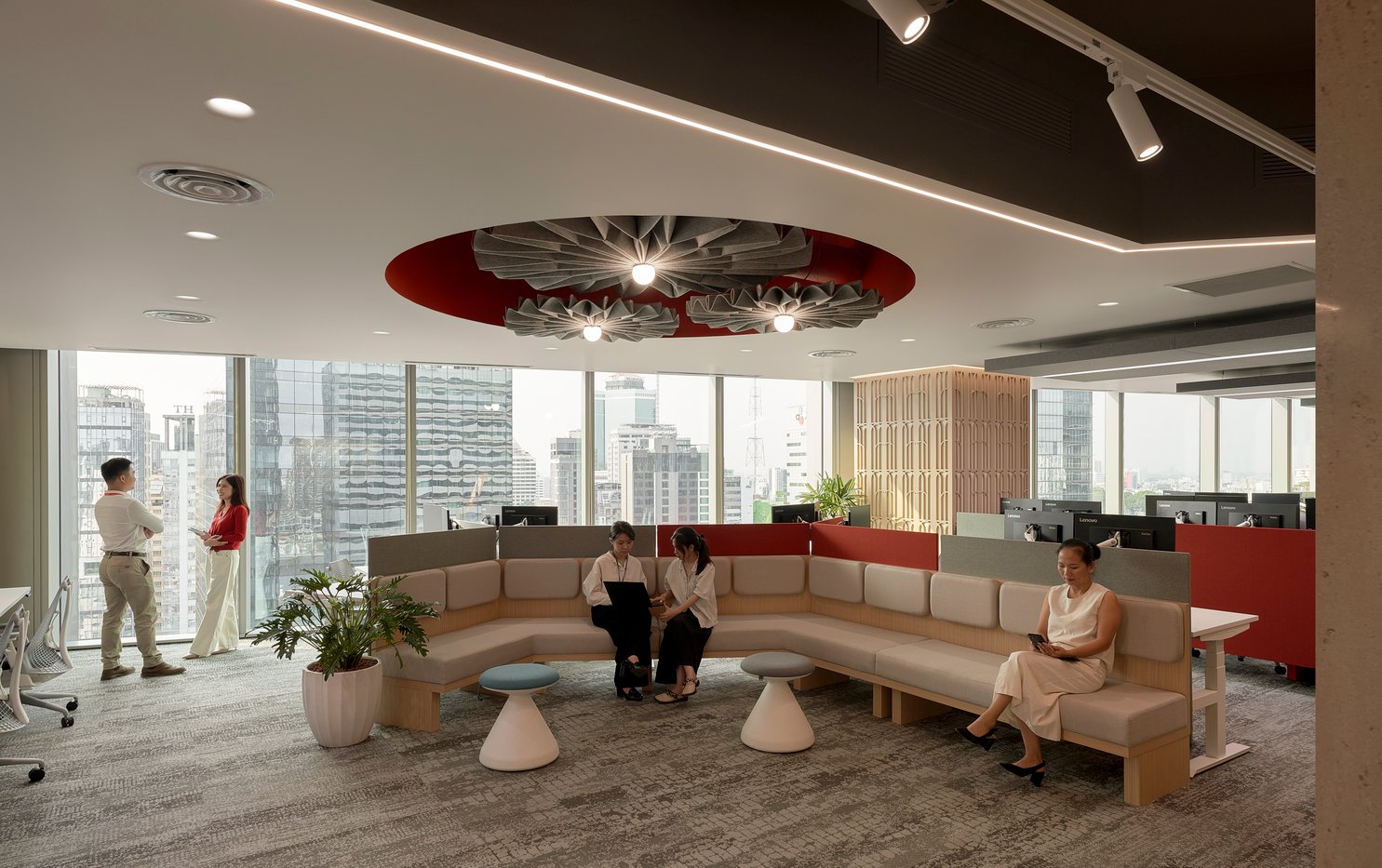From Wellness Zone To Neurodivergent Room: How Companies Are Creating Inviting, Inclusive Offices | Jianhan Qiu and Daniel Du speak to The Straits Times Singapore

In a recent feature by The Straits Times, Unispace Asia leaders, Jianhan Qiu, Principal of Strategy, and Daniel Du, Senior Principal of Design, joined industry voices from Steelcase, EY, DBS, and leading universities to discuss the evolution of office design in a post-pandemic world. As companies grapple with hybrid work realities, insights from Unispace’s 2024 Global Workplace Insights Report and design expertise are shaping the conversation on what the modern workplace should really look like.
Listening to What Workers Want
According to the 2024 Global Workplace Insights report published by Unispace, only 68% of Singapore-based employees feel they can easily find suitable spaces to get work done in the office—significantly lower than the global average of 76%.
Jianhan Qiu, Principal of Strategy at Unispace Asia, noted that employee preferences have shifted since the early return-to-office phase post-COVID. While companies initially ramped up collaboration areas to meet a craving for social interaction, workers are now seeking quiet, focused environments to support deep work.
“People still want the social elements, but they also need space for concentration,” Jianhan shared. “That’s where we come in—not just building spaces that look good, but that support evolving human behaviors.”
From Rows of Desks to Dynamic Zones
Both Jianhan and Daniel Du, Senior Principal of Design at Unispace Asia, addressed a common psychological challenge in the hybrid office: walking into an almost-empty workspace.
"Imagine walking in on a Monday or Friday and seeing rows of empty desks. It can be demotivating," Jianhan explained. "We’ve studied work patterns and realized this is more common than employers think. So we actively design to avoid it—breaking sightlines and creating dynamic zones that help the office feel more alive, even on quieter days."
Instead of traditional desk rows, Unispace uses cluster arrangements, zoned spaces, and flexible workpoints. For instance, in HP India’s office, high- and low-back seating configurations break up the floor plate and offer more privacy and variation in work modes.
In Unispace’s own Auckland studio, collaboration areas are purposefully inserted between desks to disrupt rigid layouts and promote spontaneous interaction.
Customized, Culturally-Aware Design
Daniel also highlighted a growing trend among Unispace clients: requests for tailored office elements to meet both functional and cultural needs.
“Clients are far more specific now,” Daniel said. “They’re asking for ergonomic setups, call rooms, and more quiet spaces. One standout trend is the dedicated focus zone—usually tucked into corners or low-traffic areas so employees can really concentrate.”
Cultural context is another layer Unispace considers deeply. Their Carl Zeiss office in Bangkok quietly reflects Thai working styles, while the Tripadvisor Singapore office was designed post-COVID to serve as a social hub, incorporating Southeast Asian design touches and locally sourced furniture to connect global guidelines with local identity.
In Takeda Vietnam’s workspace, Japanese brand heritage blends seamlessly with local aesthetics. Subtle ceiling features inspired by the Non La (traditional Vietnamese hats) celebrate cultural nuance without overwhelming functionality.
Designing with Purpose
What becomes clear in both Unispace’s data and design is that the workplace is no longer just a place to work—it’s a platform for culture, well-being, and productivity. From the science of sightlines to the symbolism of ceiling features, every choice tells a story.
Jianhan sums it up best: “We’re not just reacting to trends—we’re studying patterns, understanding behavior, and creating spaces that truly support how people want to work.”
With over 10,000 people surveyed across 13 countries, the 2024 Global Workplace Insights report offers a vital roadmap for companies rethinking their office strategies. And with leaders like Jianhan and Daniel steering Unispace Asia, it’s clear that tomorrow’s workplaces are being designed not just with aesthetics in mind—but with people at the center.
Further Reading
Full article in The Straits Times: From wellness zones to neurodivergent rooms – how companies are creating inviting, inclusive offices
Learn more: Unispace Global Workplace Insights 2024

About Jianhan Qiu, Principal of Strategy, Unispace Asia

Jianhan serves as the Principal of Strategy in Asia, where he leads the strategy and change management practice. He has developed innovative strategy and change management solutions that have helped many organisations align their work environment with their goals. As a certified LUMA practitioner, Jianhan is always embedding human certified design thinking into his solutions which contributed to his success as a seasoned workplace strategist.
Follow Jianhan Qiu on LinkedIn.
About Daniel Du, Senior Principal of Design, Unispace Asia

Daniel serves as the Senior Principal of design in Asia. He joined Unispace since 2022 and has been involved in both regional and global projects, including TripAdvisor, Smith & Nephew, HSBC and Takeda.
Follow Daniel Du on LinkedIn.





